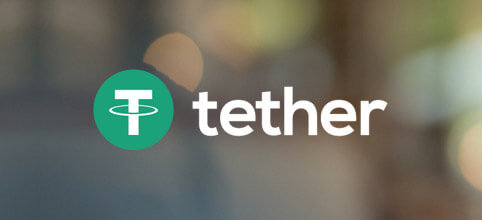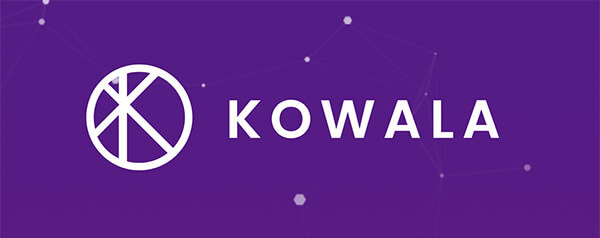 Stablecoins 101: Why the Crypto Market Needs Fiat Stability
Stablecoins 101: Why the Crypto Market Needs Fiat Stability Stablecoins 101: Why the Crypto Market Needs Fiat Stability

Cover art/illustration via CryptoSlate. Image includes combined content which may include AI-generated content.
The crypto market has been a bloodbath to kick off February 2018. Bitcoin dipped to more than two-thirds of all-time high price. Investors who have only recently gotten into crypto trading are lamenting not only the bearish market but also the lack of means to easily cut losses.
Volatility has been crypto trading’s boon and bane. On one hand, it allows active traders to take advantage of swings for significant daily profit. On the other, taking their eyes off of charts even for just a few minutes can spell missed opportunities or losses to investors. Stablecoins could help minimize these downsides by allowing investors to park their trading funds in a less volatile coin especially since only a handful of exchanges support fiat funds.
To those unacquainted, stablecoins (not to be mistaken for the StableCoin cryptocurrency) refer to crypto assets that are designed to reduce the volatility that affects most cryptocurrencies. Stablecoins firmly hold their value for longer periods of time. Investors should be able to trade for these coins on exchanges to safeguard their portfolios from the market’s massive swings.
There have been several attempts at delivering viable stablecoins into the crypto market with most pegging their value to the US dollar. Tether is arguably the most popular stablecoin to date. Other stablecoins like MakerDao, Basecoin, and new entrant Kowala all aim to provide diversity to this limited pool of stablecoins. These efforts have reached varying degrees of progress and success but they all aim to ease the volatility concerns surrounding cryptocurrencies.
The Tether Controversy

Tether may be the most used stablecoin and is utilized by many crypto exchanges as an alternative to fiat currencies. Tether is designed to hold its value against the US dollar. To do so, Tether (the company) must have cash in the bank to back every tether (the coin) in circulation.
Unlike other blockchain ventures, Tether acts as a centralized authority and controls the supply of tethers in existence. But to provide some semblance of transparency, Tether claims to subject these holdings to professional audits.
However, Tether has been the subject of controversy of late. Worrying jumps in tether’s supply have been pointed out, putting into question the existence of actual fiat backing that it supposedly needs. In addition, these increases in supply coincide with drops in Bitcoin’s price-raising suspicions that these new tethers were used to scoop up Bitcoins at an attempt to buy low. This would have also meant that Bitcoin’s rise to all-time highs may have been propped up by unbacked tethers.
The company has been subpoenaed by the US Commodity Futures Trading Commission and the company has yet to verify if it truly holds the $2.3 billion it needs in reserve to back the available tethers. A CoinDesk report last January also revealed that Tether’s relationship with auditing firm Friedman LLP has “dissolved.”
These have brought about growing concerns regarding the credibility of Tether. There are now fears that if Tether is found as not actually having enough reserves to back its supply, tether’s price could crash sending the rest of the market down with it.
Room for Other Coins
These issues with Tether may come as a knock against stablecoins in general but this doesn’t remove the need for less volatile coins in the market. Besides, the market ideally shouldn’t be staked by one stablecoin. It could even be argued that if there were only diversity in stablecoins used in trading, the market would not be under such immense pressure right now. It may be high time for other coins to be brought into consideration. Here are three other stablecoin projects worth noting:
Kowala

Kowala’s kUSD – is yet another addition to the stablecoin mix. kUSD uses Kowala’s Yap Consensus which features advanced stability algorithms that similarly tweak supply based on its price against the US dollar, thereby forgoing the need to be asset-backed.
However, unlike centralized approaches, Kowala offers real-time transparency to all users. kUSD’s blockchain promises to be sustainable and makes mining accessible even to those with non-specialized mining devices.
MakerDAO
 MakerDAO’s Dai – aims to offer a decentralized alternative to Tether with its Dai. Like Tether, Dai aims to be 1:1 with the US dollar.
MakerDAO’s Dai – aims to offer a decentralized alternative to Tether with its Dai. Like Tether, Dai aims to be 1:1 with the US dollar.
However, as opposed to having a centralized authority commit to backing the supply, the Dai requires collateral like Ether.
Its supply also rises and falls to keep pace with the US dollar.
Basecoin
 Basecoin – uses a protocol that also tweaks its supply to keep its exchange rate constant with the US dollar. If Basecoin’s price is above $1, it creates new Basecoin. If the price drops, it sells Base Bonds to reduce coins out of circulation.
Basecoin – uses a protocol that also tweaks its supply to keep its exchange rate constant with the US dollar. If Basecoin’s price is above $1, it creates new Basecoin. If the price drops, it sells Base Bonds to reduce coins out of circulation.
The effort has attracted the support of major funds like Andreessen Horowitz and Bain Capital underscoring the value that institutional investors see in stablecoin.
Beyond Trading
Aside from giving investors a way to conveniently park their investments, stablecoins can actually serve a variety of other purposes that other cryptocurrencies fail to fulfill. Volatility does not only affect trading and investing but it also hinders wider adoption of cryptocurrencies for other transactional purposes. Bitcoin has failed to serve its purpose as a digital currency since volatility made it impractical for merchants to accurately price goods and services.
Kowala, for instance, views a variety of other uses for its coin including digital payments and even as a digital alternative to fiat currencies. Such a stablecoin could help consumers enjoy the security and benefits provided by cryptocurrencies and use it in ways they would fiat currencies.
The availability of wallet services also helps provide banking functionalities and financial inclusion to the unbanked. Kowala even posits that stablecoins could even provide better stability compared to the fiat currencies of some countries experiencing serious economic turmoil. Merchants could also easily accept these coins since they would be able to put a definitive price on their goods and services.
Letting the Market Decide
Despite the flak that Tether has brought upon stablecoins, there is clearly room in the crypto landscape for stablecoins. Stablecoins encourages further adoption of cryptocurrencies across a variety of use cases. The availability of more stablecoins only helps create a fairer market. Decentralized, transparent, and autonomous approaches could help overcome the issues encountered by Tether.
It would be interesting to see which of these coins would be successful in solving volatility in cryptocurrencies. If any of these coins do so, it would take cryptocurrencies one step closer to function as true replacement to fiat. However, as with any emerging technology, stablecoins need to be subjected to widespread use to see if they will truly find success in meeting their vision.




































































































